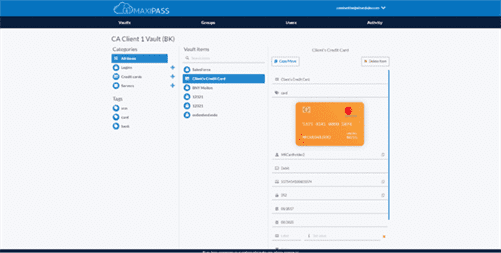You know you’re ready to move into the next stage when you no longer hear anyone complain about working with other team members. It’s also important to share the project roadmap with the team so that everyone can see the project’s starting point, proposed check-in points, and end goal. This gives team members insight into the bigger picture while breaking down the timeline into smaller, achievable increments. In agile software development, high-performance teams will exhibit a swarm behavior as they come together, collaborate, and focus on solving a single problem. Swarming is a sometime behavior, in contrast to mob programming, which can be thought of as swarming all the time.
Psychologist Bruce Tuckman was the first to document the different phases that teams go through as they develop. In this article, we discuss the different stages of group development and how you can guide your team through them to optimize collaboration. Not every team moves through these stages in order and various activities such as adding a new team member can send the team back to an earlier stage.
Have we moved beyond Forming, Storming, Norming and Performing?
At the beginning, everyone is excited about being a part of the team. Even though they aren’t sure how things will turn out, they know it will be a great experience. At this stage, the team is characterized by high enthusiasm and low productivity. While the team forms, the role of the leader is to give clear direction, set out the goals and objectives, and help the team members understand exactly what the leader expects them to do. In the performing stage, you’ll notice fluidity with communication and overall conversations. This is demonstrated through high morale, productivity and engagement.

This way, they’ll remain high-performing while re-establishing trusted connections. Understand your people’s needs and make team management your greatest strength. Guides & tools Downloadable guides for busy managers to drive performance.
Stage 2: Storming stage
When forming a team, leaders need to build trust, set expectations and encourage involvement. You want to develop a keen sense of belonging in every member. Creating a team charter is a great tool to help your team, as is conducting different kinds of „get to know you“ activities.
- True interdependence is the norm of this stage of group development.
- Everyone knows the challenges of coordinating a team – no matter how small the size or how miniscule the project, conflict will arise in some form.
- These roles could be the official title they were hired to do, or the role they fit into naturally within the group dynamic.
- You recognize that your team is new, and want them to feel supported, motivated and psychologically safe.
- Chris asks each team member if they’ve attended annual safety training in the past.
- While those people are still available when we need them, we usually don’t.
The team needs clarity and connection more than anything else at this stage. Take the time to call out assumptions about the work and how you’ll work together. Solving problems face-to-face instead of over email or chat is a good investment right now because you’ll get https://www.globalcloudteam.com/ a richer sense of who your teammates are as people. The forming-storming-norming-performing cycle repeats more often than you might think. Do the members embrace new ideas readily, or do they resist them? These answers will provide insight into how mature your team is.
Working to build a better world
As people start to understand their roles, they either settle in or maneuver for more influence. Leadership is tested as team goals can be tested and resented. Some teams move through this stage quickly, some never leave it. However, this stage is necessary as teams can only be successful if they are truthful. Team members may feel a variety of concerns about the team’s impending dissolution.
Team cohesiveness is the extent that members are attracted to the team and are motivated to remain in the team. Members of highly cohesive teams value their membership, are committed to team activities, and gain satisfaction from team success. They try to conform to norms because they want to maintain their relationships in the team and they want to meet team expectations. Teams with strong performance norms and high cohesiveness are high performing. As a team manager, it’s important to understand that the forming stage marks the beginning of a new team’s journey.
Resources to stay productive and profitable
This is also a great opportunity to recognize and praise the talents of specific team members. Your team will experience obstacles four stages of team building in the storming stage. While originally things had been going according to plan, roadblocks crop up during this stage.

Without strong leadership, teams may struggle reaching the performing stage. By developing your own leadership skills, you can model collaboration best practices and help your team reach their fullest potential. In the earlier stages of your team’s formation, establish a clear communication plan. A communication plan is an outline of how your team is going to communicate important information to key stakeholders. Clarity on the various avenues of communication allows team members to effectively get work done, understand their roles, and know where to find the information they need about work. Establishing a communication plan can help you do all of these things in a way that’s easy for your team to follow.
Adjourning — Success! You made it
The intuitive mind allows individuals to identify what they’re feeling. Often the logical mind works within defined biases or other constraints. Intuition recognizes signals outside of the logical filters.
Take advantage of expert, personalized guidance by phone or in person. Seminars and webinars are designed to help you navigate the college admissions process, plan, and pay for your—or your child’s—college education. To advance from this stage to the next stage, each member must relinquish the comfort zone of non-threatening topics and risk the possibility of conflict. Explore Agency Life and learn how to scale your agency, straight from agency leaders. Be intentional about teaming and you’ll go farther, faster.
Team Development Stages and Leader’s Role in Them
The casual nonchalance in this stage should be balanced with a healthy respect for how important it is as it will directly influence how the team will act. Natural talent will only get one so far in the real world, however. ThoughtHub is a collection of knowledge to help you learn more about your favorite topics. Here you’ll find a variety of articles on subjects such as business, ministry, archaeology, communication, psychology, education and many more.
